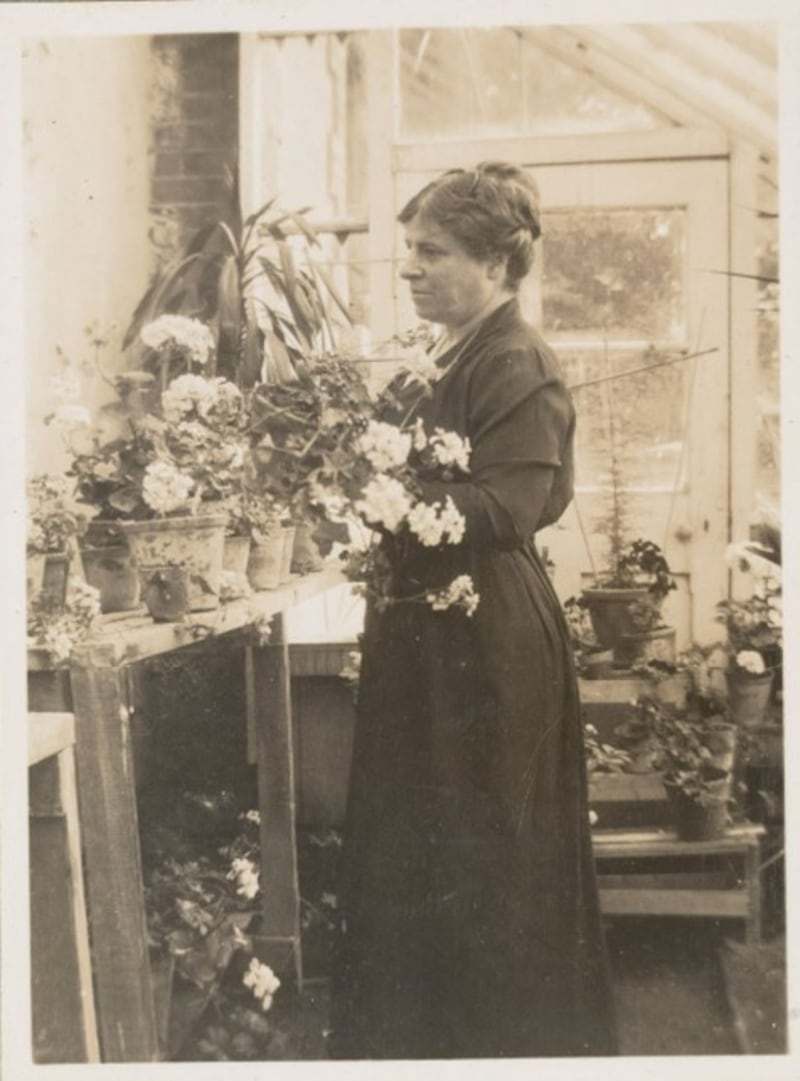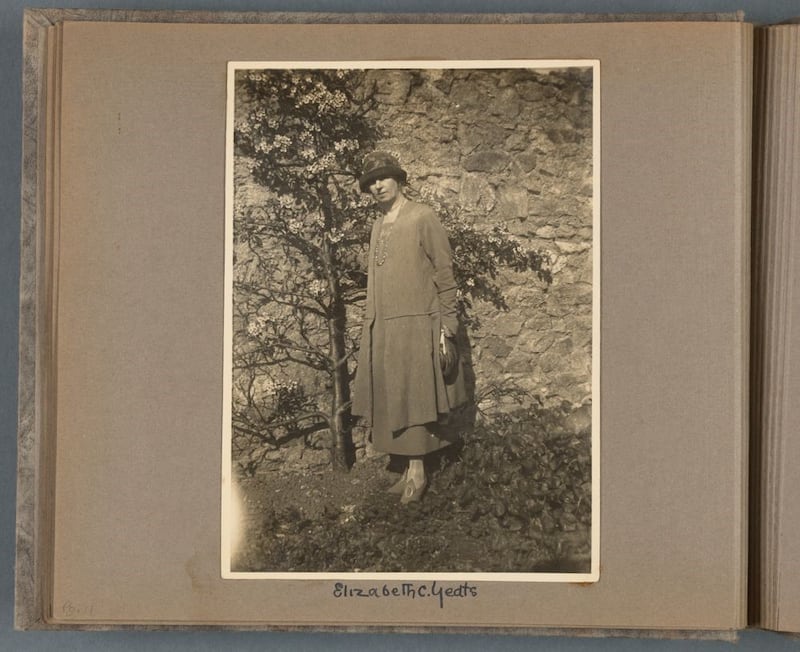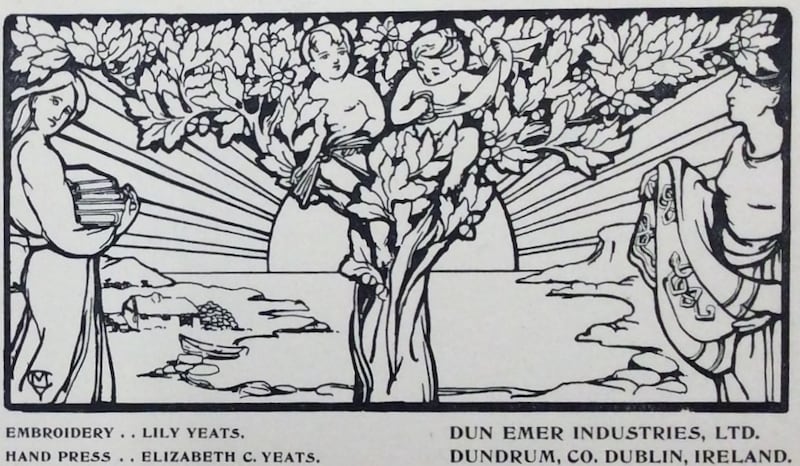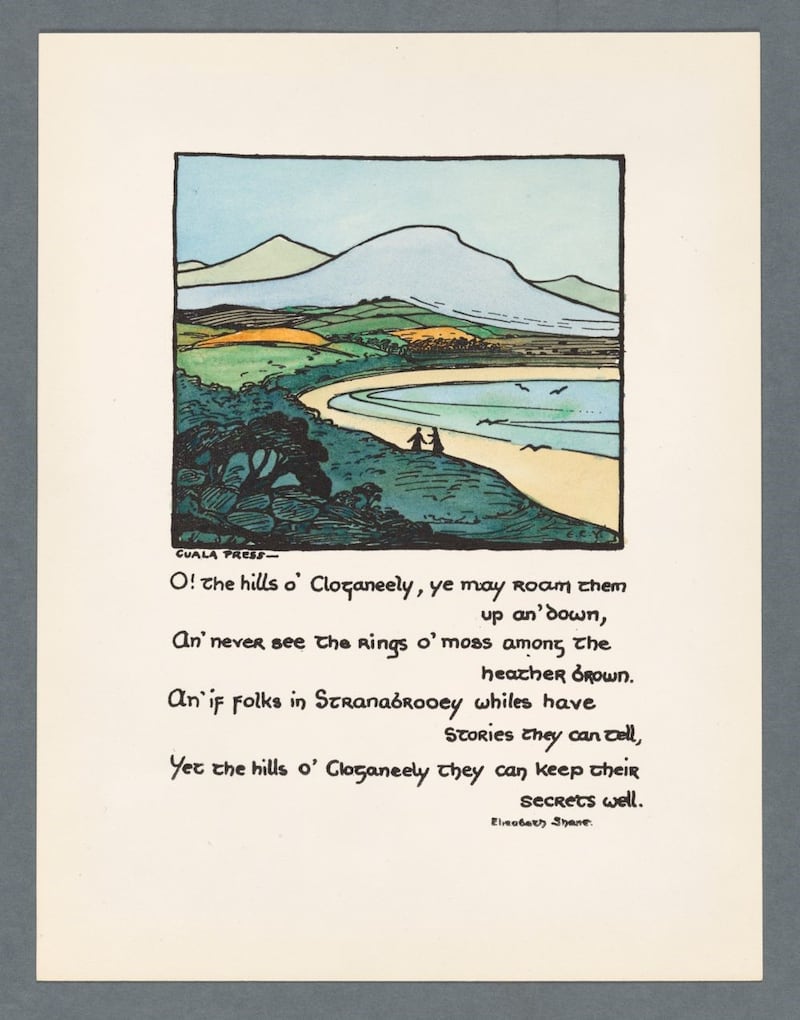In the small St Nahi’s Church, Dundrum, Co Dublin, are four altar tapestries depicting biblical scenes. They were designed by Elizabeth Yeats and made by Susan Yeats for their parish church, where they were buried in the 1940s.
Yeats. Who springs to mind? WB? Maybe Jack? Perhaps their father John Butler?
Not much is heard of Susan and Elizabeth Yeats, the somewhat forgotten sisters. They were two significant Irish women of the Celtic Revival, creative and strong, accomplished and pioneering, and a light is belatedly being shone on their work and lives.
Susan (called Lily to distinguish her from her mother Susan Pollexfen, who married artist John Butler Yeats) was a skilled embroiderer; Elizabeth an art teacher, author and publisher. They grew up between London, Dublin and Sligo, studied at Dublin Metropolitan School of Art, and later the Chiswick School of Art (as did Jack), and Elizabeth learned book-making with the Women’s Printing Society. In 1890s London they became part of an artistic circle that shaped an Irish revival, and were influenced by William Morris and the Arts and Crafts Society.
READ MORE
They moved to Churchtown, Co Dublin, with their father in 1902 and joined suffragette Evelyn Gleeson’s pioneering Dun Emer Guild Dundrum studio (printing, embroidery, tapestries). The Yeats sisters later split off and set up Cuala Industries – the Cuala Press directed by Elizabeth and Lily’s embroidery workshop – in Churchtown. They led and trained creative women (including Beatrice Cassidy, Molly Gill, Esther Ryan, Eileen Colum) over four decades in south Co Dublin, a period of prodigious creativity, enterprise and acclaim.

Susan Mary Yeats and Elizabeth Corbet Yeats, born in 1866 and 1868, were sandwiched in their talented family between poet William Butler Yeats and painter Jack. “I think they were overshadowed because they had two really big (in reputation) brothers. They get lost in that story. Their talent has always been largely seen as second, or indeed third and fourth, fiddle to the other two,” says Eunan McKinney, who’s behind the inaugural Yeats Sisters symposium this July near their home territory, Dundrum. “There’s a whole set of circumstances, of gender, of society, the time and place they were born, that led to their reputation being neglected.”
All the same, “having such a well-known name in Anglo-Irish Revivalist circles was without doubt a marketing coup in their lifetime” even if their achievements were subsequently eclipsed by their brothers, observes art historian Dr Angela Griffith, academic lead on Trinity College Dublin’s Cuala Press Project. There have been studies of Elizabeth and Lily Yeats (including by Gifford Lewis, Nicola Gordon Bowe, Karen Brown) but familial relationships often dominate discussions. These were important, not least because both men worked with and for the sisters, she says (William was editor for Elizabeth’s presses and Jack a contributing artist). “Family needs and aspirations directed their life choices.”

The Cuala Press Project is archiving, conserving and researching the Cuala Archive, donated by the Yeats family to Trinity Library in the 1980s, and a collection of over 100 Cuala prints donated more recently by Vin Ryan of the Schooner Foundation, which supports the project. The collection is being digitised for public access.
The project situates Dun Emer and Cuala in the wider cultural, historical and political landscape of the early 20th century. Griffith points out the Yeats sisters’ significance given women’s roles at the time, their agency and their place (or not) within subsequent histories. From the beginning, Dun Emer and Cuala trained and employed only women, aiming to enable them to live independently. They learned needlecraft under Lily, tapestry and weaving with Evelyn Gleeson and hand printing from Elizabeth. The company advertised that they employed Irish hands and used the best of Irish materials, to make “beautiful things”.
[ From Dun Emer and Cuala to Gayfield and Dolmen: a history of small Irish pressesOpens in new window ]
Cuala’s literary content, and most of Dun Emer and Cuala’s visual materials, including prints, illustrations, cards and bookplates, “reflected revivalist and nationalist definitions of Irish culture”, says Griffith. “The rural landscape, in particular the west of Ireland, its inhabitants and local traditions, were viewed as culturally authentic and distinctive from British-styled urban centres. The west became a metaphor for Irishness, a visualisation of Irish identity.” Champions of the Irish Revival recognised the arts afforded Ireland a platform to assert itself as a sovereign cultural and, by extension, political entity, says Griffith; Cuala work was exhibited in State-sponsored national and international exhibitions.
Jack provided numerous designs – of Irish life, landscape and characters; farm cottages, race meetings, fair days – for Dun Emer and Cuala, but most Cuala designers were women, including Dorothy Blackham, Beatrice Elvery (Lady Glenavy), Jack’s wife Mary Cottenham Yeats, and Elizabeth Yeats, with designs often reflecting Irish domestic life and women’s lives.

Significantly, Dun Emer and Cuala Industries “provided a creative outlet for female writers and artists”, says Griffin. As elsewhere, “Irish women were beginning to assert themselves within the fine arts. From the turn of the last century, women were finding new roles in modern society, including opportunities to train as artists, to travel and to exhibit. More often than not, women created their own opportunities. Within the international Arts and Crafts movement, and with Cuala, women created a space where they successfully competed with their male peers, establishing themselves, and securing recognition for their work.”
Dr Billy Shortall, doing post-doctoral research with the Cuala Press Project, says, “From the outset of the enterprises, the women of the Cuala Press were not a coterie of gentility oblivious to the shadow of the gunman or the terrible beauty hanging over the country. Cuala was born out of the Irish Revival that fuelled the drive for political independence and the artistic output reflected the prevailing nationalist cultural and political ideology. Between 1902 and 1946, it can be argued Dun Emer and Cuala Press held a mirror to Irish society.

“Much of their early print material reflected an Irish Revivalist agenda and were primarily expressions of a nationalist identity often through idealised representations of Irish rural life. Their art prints, which reached national and international audiences, portrayed a stable Ireland, populated by proud and industrious people. They celebrate the country’s distinct heritage, countering previous English constructs of Irishness. They attest to the new State’s objectives, projecting itself as a competent and self-determining nation.”
[ Seventy women who’ve shaped Irish culture, from Ninette de Valois to FelispeaksOpens in new window ]
Cuala published new work by important Irish writers of the literary revival. “Both content and aesthetic were exceptional,” says Shortall. “William B Yeats said the first volume printed by his sister Elizabeth, his own In the Seven Woods (1903), was ‘a pleasure whether open or shut’.”
The symposium is timed to mark Seven Woods’s publication, and weaves together several threads, including the Arts and Crafts movement, and ongoing interest in making and collecting “beautiful things”, says McKinney. He recalls his amazement, during symposium planning, when Mary O’Reilly of the Irish Guild of Embroiderers pulled The Meadow from her handbag, a huge Lily Yeats embroidery which she had on her wall. Yeats’s embroideries are also in the National Gallery collection (though not on display). “They are of a time, and as a piece of artistic work they are magnificent.”
Money was tight for the Yeats sisters, and the business struggled financially. There were also some disharmonies: with Eileen Gleeson, with WB and between the sisters themselves.
The relationship with WB seems to have varied between benevolent and bullying, McKinney observes, and he and Elizabeth had a somewhat strained relationship.
McKinney aims to revive and expand public knowledge and understanding of Lily and Elizabeth Yeats’s immense achievement, and their association with Churchtown and Dundrum which nurtured their most productive period. He wants to promote appreciation of their pioneering ideals and their relevance to modern Ireland, encouraging a new generation of discovery and research. “It’s very early days and I hope this will be the start of a much longer reinstatement and restoration of their reputation.”
The Yeats Sisters’ Inaugural Symposium, Taney Centre, Dundrum, on July 15th includes papers from Dr Angela Griffith and Dr Billy Shorthall; Dr PJ Mathews and Dr Lucy Collins of UCD; Dr Ann Wickham; and book artist Mary Plunkett. https://theyeatssisters.com. The Cuala Press Project’s digitised archive of the Yeats sisters’ prints, embroidery and photographs: https://digitalcollections.tcd.ie















